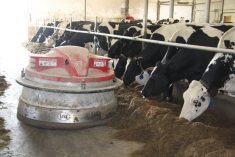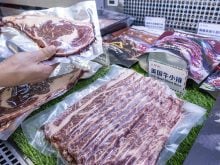DENVER, Colo. – The U.S. government is staying the course on a plan to provide a voluntary national livestock identification scheme using public-private co-operation.
“We feel the ID system must be grounded in partnership,” U.S. agriculture secretary Mike Johanns said on Feb. 3 during a special session at the National Cattlemen’s Beef Association annual convention in Denver.
He said his department has reviewed the United States Animal Identification Organization work to date and believes the multi species group has a good plan, which would be to offer a central database using electronic identification.
Read Also

Manitoba extends Crown land rent freeze
Manitoba government links the continued rental rate freeze on grazing and forage leases to economic and environmental challenges facing the industry
“We feel it represents real progress.”
However, he said he is not changing the U.S. Department of Agriculture identification plan, which consists of multiple privately owned databases with portals that the government can enter when it needs information in the event of a recall or other food safety problem.
A single agency and one database could create a gridlock, he added, and might not be capable of all that the government hopes for in terms of rapid traceback ability or capacity to store tremendous amounts of information.
There are about 90 million head of cattle at any given time in the U.S. so implementing a single system could be difficult, he said.
He wants to see identification criteria for the system posted soon. So far the government has allocated about $100 million US for the program.
He told NCBA members that Canada and Australia are using their identification abilities as a sales tool in markets where the U.S. was once strong.
“Australia is a very fierce competitor in the beef area and they will continue to be,” he said.
He told reporters the government program remains voluntary, but he hopes the marketplace will force people to adopt it without legislative pressure.
More food companies are demanding the ability to trace food products back to the farm of origin.















